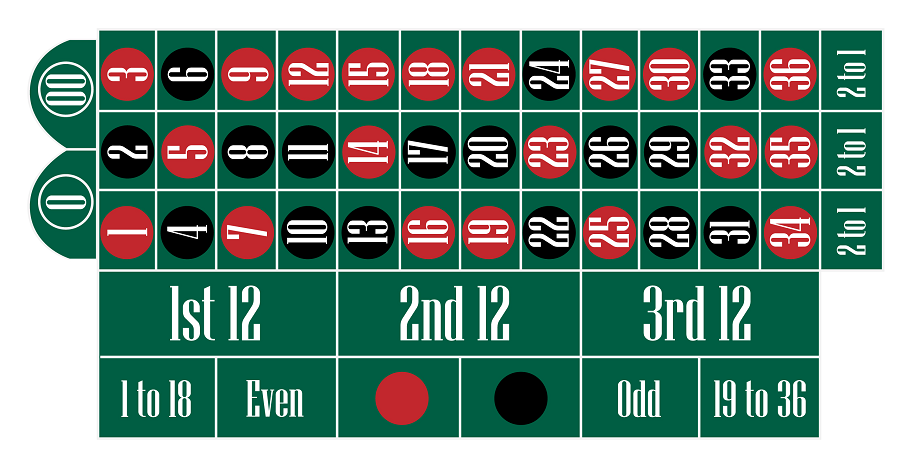The 212-wagering method introduces a distinctive betting approach suitable for games like blackjack, roulette, baccarat, and some additional casino games. This slightly positive progressive tactic focuses on augmenting bets post-victories to harness profitable runs. The term “slightly” denotes that the 212 method (often dubbed the Manhattan approach) carries less risk in comparison to many other wagering methods.
Are you keen on a betting blueprint that could amplify your wins without excessive stakes? Dive into this guide to understand the nuances of the 212-wagering method, its best applicability, advantages and drawbacks, and comparable strategies. We’ll also delve into its feasibility in the world of sports betting.
Understanding the 212 Wagering Method
Originating from a distinctive betting sequence, the 212 method initiates by staking 2 units, transitioning to 1 unit after a successful round, and again 2 units post the subsequent win. Post the third victory, the wager escalates by 1 unit for every successive win. However, any defeat mandates a return to the foundational 2-unit stake. While we’ll delve deeper into the details and practical instances shortly, this provides an overview of the 212 wagering approach’s foundational idea. At its core, it’s about elevating stakes at specific intervals to leverage winning runs, often termed positive progression. Primarily, the 212 is tailored for casino endeavors featuring even-money stakes (yielding a 1:1 payout), especially games like blackjack and roulette. Such even-money bets exhibit lesser volatility compared to their high-paying counterparts (e.g., 5:1). Hence, staking even-money wagers with the 212, and similar methods, generally implies lower risk.
The Mechanics of the 212 Wagering Method
A pivotal step in adopting the 212-wagering method is ascertaining your spending capacity. What’s the upper limit you’re willing to stake at this juncture? For instance, if it’s $1,000, then that becomes your gambling reserve. Subsequently, select a reference unit to govern the stakes within the 212 frameworks. A common practice among bettors is to derive this unit based on the casino’s lowest permissible bet. Let’s say you’re engaging in a live blackjack session with a floor limit of $5; in that case, your unit mirrors this amount.
Conversely, for an online blackjack variant allowing a base stake of $1, your chosen unit corresponds to this value. Another strategy is to decide the unit relative to a fraction of your overall gambling reserve. For instance, choosing 1% from a $1k reserve would equate to a $10 reference unit. This alternative is especially apt for those with substantial reserves, eyeing substantial returns during productive runs. Once your reserve is set, the journey with the 212-wagering blueprint begins. Here’s a brief on its pivotal phases:
- Start with a wager of 2 units.
- Decrease to 1 unit after securing a win.
- Bump up to 2 units after a subsequent win.
- Add 1 unit for each subsequent victory (for instance, 3 units after a trio of wins). Any loss resets the sequence, returning you to the initial 2 units. For example, if you clinched the first wager (2 units) and faced a defeat in the second (1 unit), you’d revert to the starting bet of 2 units.
By understanding the 212 Method through an example, you might grasp how the 212 wagering method functions. Yet, a comprehensive example could make the strategy more straightforward. Consider a gaming session using a $5 unit:
| Bet / Units | Result | Profit / Loss |
| $10 (2) | Loss | ($10) |
| $10 (2) | Win | $0 |
| $5 (1) | Win | $5 |
| $10 (2) | Loss | ($5) |
| $10 (2) | Loss | ($15) |
| $10 (2) | Win | ($5) |
| $5 (1) | Win | $0 |
| $10 (2) | Win | $10 |
| $15 (3) | Win | $25 |
| $20 (4) | Win | $45 |
| $25 (5) | Loss | $25 |
The session began on a rocky note, with losses in three of the initial five attempts. If you had placed a consistent bet of $5 after being down by $15, you’d have achieved a mere $10 gain even after five successive victories. However, with the 212 approaches, the winnings surged to $45 (before the ultimate loss) due to augmented stakes.
Weighing the Pros and Cons of the 212 Method
The preceding illustration paints a rosy picture, but the 212 strategy has flaws. Let’s dissect the merits and pitfalls of this approach:
Advantages:
- Enhances earnings during favourable runs. • Displays lesser unpredictability compared to strategies like Paroli and Martingale.
- Presents a relatively lower risk than many counterparts.
- Becomes intuitive once familiarized. • Introduces a fresh and thrilling dimension to casino gameplay.
Drawbacks:
- Commences with a 2-unit stake (in contrast to the usual 1-unit beginning in many systems). • Unconventional step of reducing to 1 unit post the initial victory.
- Ambiguity regarding rules for blackjack actions like double downs and splits. • Profits are harder to retain due to frequent stake augmentation.
- Possesses a steeper learning gradient despite being generally user-friendly.
Implementing the 212 Method in Blackjack
Blackjack stands as a prime candidate for the 212 techniques. Standard victories yield even money, and there’s approximately a 45% probability of winning a hand (excluding ties). While a 45% success rate may not be optimal for the 212 approach, it’s acceptable for many enthusiasts. Moreover, blackjack boasts of an edge of slightly less than 0.5% (with a 99.5% Return to Player) under perfect conditions. This edge narrows down courtesy of the option to double down and split at opportune moments. Thus, the seemingly average 45% success rate is mitigated when employing the 212 or Manhattan strategy.
However, options like doubling down and splitting can introduce complications. Doubling amplifies your base bet by twofold, and splitting can elevate it from double to quadruple, depending on the splits. When faced with these choices, a helpful tip is to conclude the hand and then persist with the usual system.
For clarity, here’s a scenario:
- A bet of 1 unit (after a victory with a 2-unit wager).
- After receiving your cards, you opt to double down (risking 3 units).
- You win the hand.
- You proceed with a 2-unit bet (following the 2-1-2 sequence) rather than jumping to 4 units (typical post a 3-unit win).
The goal remains maintaining the strategy’s simplicity, removing added intricacies after successful double downs or splits. This approach also helps in curbing potential risks after significant wins.
212 System Adapted for Roulette
Given its array of even-money options, Roulette fits many betting systems. The 212 betting strategy pairs nicely with roulette.
Here are the three primary bets you should focus on in roulette:
- High or Low – Betting on numbers 1-18 (low) or 19-36 (high).
- Odd or Even – Placing bets on either odd or even outcomes.
- Red or Black – Betting on the colour of the pocket, red or black.

These wagers offer even payouts, making them ideal for the 212-betting technique. However, roulette does come in different versions, each with slight nuances. The distinctions among these variations are minimal but do affect the house edge.
Here are the key roulette versions:
- European Roulette – Features 37 pockets with one zero; has a house edge of 2.70%.
- French Roulette – Uses a European layout and offers a 50% refund if the ball settles on zero; boasts a 1.35% house advantage.
- American Roulette – Houses 38 pockets with both single and double zeros; comes with a 5.26% house disadvantage.
212 Strategy Applied to Other Casino Games
While blackjack and roulette are prime choices for the 212 strategy, they aren’t exclusive. This system can also be applied to:
- Baccarat – Betting on the banker’s hand gives even-money payouts and has a 1.06% house edge. The player hand, offering even money, has a 1.24% house advantage and is also a viable option.
- Craps – The pass line (with a 1.41% house edge) and don’t pass line (at 1.36%) both offer even-money outcomes.
- Jacks or Better (video poker) – You can win around 45% of hands using the right strategy. Its allure lies in the substantial payouts for high-ranking hands, like the royal flush.
- Pai Gow Poker – If you overlook the frequent pushes, your winning odds against the dealer hover around 50%.
Can the 212 Strategy be Applied to Sports Betting?
The 212 betting approach can be integrated into football, basketball, and hockey. You should target bets with -110 odds, although -105 odds would be optimal if available. A win at -110 odds yields $10 for every $11 bet. The payout isn’t purely even, but it’s a close match, especially if you’re passionate about sports betting. Naturally, mastering sports betting will amplify your odds with the 212 system.
Other Betting Systems to Explore
If you find the 212-system promising, you might be keen to delve into other betting methodologies. Here’s a mix of both positive and negative progression strategies:
Positive Progression Techniques:
- 1-3-2-6 | This approach shifts from 1 to 3 to 2 to 6 units during winning streaks.
- Reverse Martingale | It mandates you to double bets after each victory. It’s a high-risk strategy as one loss can negate all gains. Players often reset after a set number of wins.
- Paroli | After each win, your bet increases by a unit. You revert to the beginning after netting three consecutive wins or following any loss.
- Oscar’s Grind | This entails increasing your stake by one unit after each win, maintaining the same bet after a loss. Once you achieve a 1-unit profit, the cycle restarts.•
Negative Progression Techniques:
- Martingale | A high-risk system, it necessitates doubling the bet post every loss. The process continues until a win, after which you drop back to a single unit.
- Labouchere | Define a winning goal (say, 10 units) and draft a sequence summing up to it (like 2, 3, 1, 4). Sum the first and last numbers to fix your bet. After a win, strike out the numbers; append the bet to the sequence after a loss.
- Fibonacci | This is centered around the Fibonacci sequence. The next bet is determined by the sum of the initial two numbers of the sequence. After a win, you erase those two numbers; after a loss, you append the lost bet to the sequence.
- D’Alembert | Post each loss, your bet increases by a unit, while it decreases by a unit after wins. • 2-1-3 (or the Los Angeles system) | This closely mirrors the 2-1-2 but modifies the third bet to 3 units post two victories.
Mastering the 212 System
Enhance your expertise in the 212 system with these tips:
- Opt for Games with Favorable House Edges – Prioritize games like Blackjack, Craps, French Roulette, and Baccarat for the 212 strategies. These games feature even-money bets with sub-2% house advantages.
- Recognize the Best Bets – Ensure you know the most profitable wagers within a game.
- Commit to your Budget – Set your bankroll and adhere strictly to it beforehand.
- Secure Casino Bonuses – Complement the 212 system’s gains by earning bonuses, provided you meet the stipulated terms.
Origin of the 212 Strategy
The 212 system’s history is somewhat enigmatic. Its moniker, “Manhattan”, might hint at its roots, suggesting gamblers in Manhattan might have conceptualized it. The region’s area code, 212, further supports this theory.








